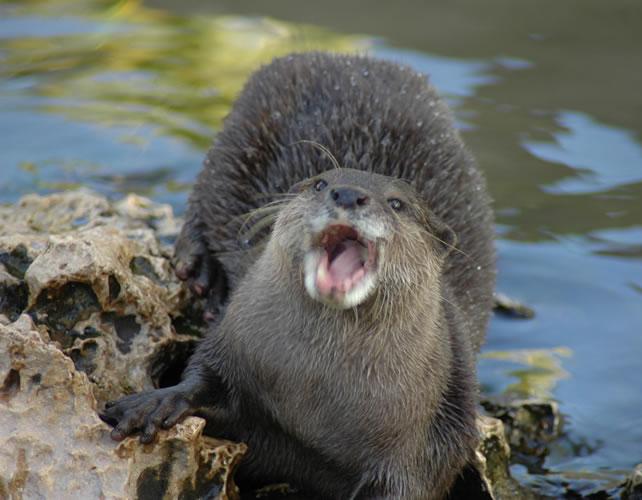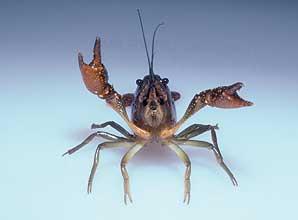The river otter lives in the Hudson River.


Like black bears, river otters are mammals (warm-blooded animals with fur who nurse their young). The obvious habitat of the river otter is freshwater. Interestingly, these aquatic mammals also find shelter in burrows and wooded areas near the river. During the day, you'll find river otters sunning themselves on riverbanks. They're playful animals who like to have fun both in and out of the water. River otters slide on their bellies down muddy hills and snow-covered riverbanks. They can slide very fast. What an energetic animal!
River otters adapt well to their environment. Their thick fur keeps them dry and warm. Otters use their long tails to steer themselves through the water and their webbed hind feet act like paddles.
 Otters often hunt for food during the night. Their long, sensitive whiskers help them to detect food
in the water. River otters love to eat fish, but turtles, frogs, crayfish, snails,
and salamanders are also part of their diet. When the otters go underwater in search of food, they hold their breath and
close their ears and nostrils. They can hold their breath for up to four minutes! River otters catch the
fish in their mouths and then eat them. However, if the fish is big, they'll bring it up to the riverbank.
Otters often hunt for food during the night. Their long, sensitive whiskers help them to detect food
in the water. River otters love to eat fish, but turtles, frogs, crayfish, snails,
and salamanders are also part of their diet. When the otters go underwater in search of food, they hold their breath and
close their ears and nostrils. They can hold their breath for up to four minutes! River otters catch the
fish in their mouths and then eat them. However, if the fish is big, they'll bring it up to the riverbank.
 River otters often escape their natural enemies, but many of them are killed by hunters and trappers.
(Otter fur is very valuable!) Also, oil spills destroy the river otter's habitat. When these animals
try to swim through the oil, it sticks to their fur and they can no longer stay warm.
River otters often escape their natural enemies, but many of them are killed by hunters and trappers.
(Otter fur is very valuable!) Also, oil spills destroy the river otter's habitat. When these animals
try to swim through the oil, it sticks to their fur and they can no longer stay warm.
Which of the following things is not a characteristic of the river otter?
 |
Animal |
 |